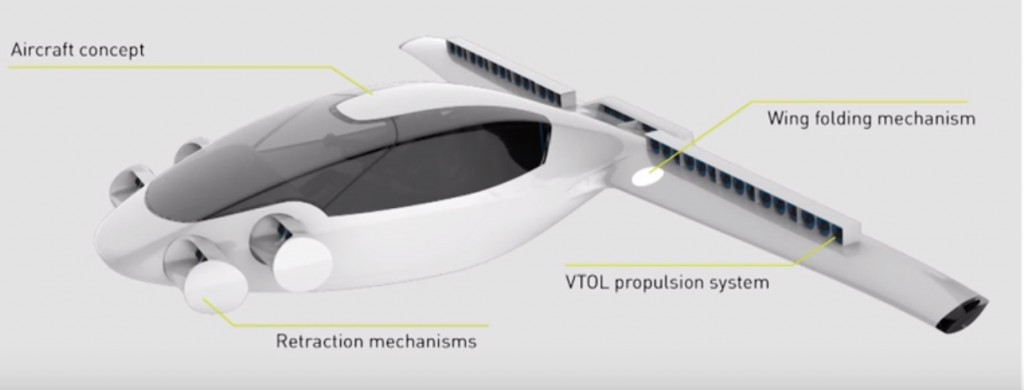Lilium: The Plane That Could Take-Off From Your Backyard
Have you ever wished you your car could fly while stuck in traffic? Did you wish you had a hoverbike? Most likely, a majority of us have, at some point in our lifetime, if not everyday of our lives. While many of us were cursing the heavens for the long lines and honking cars, someone was looking up for inspiration.
Meet Daniel Wiegand, Chief Executive Officer of the startup called Lilium Aviation. Jumpstarting just last year, it focuses on the development of the first electric-powered plane that could take-off and land vertically right at your homebase. It seems like a crazy idea but it’s actually already undergoing testing. With six people on board, Wiegand and his team have worked full time on the project and have so far launched a couple of prototypes for testing.
This two-seater egg-shaped plane is a combination of a “helicopter’s flexibility and the comfort and speed of a business jet,” claimed Wiegman during the 2015 ECO Summit in London. The German-based project has since captured the interest of more than a dozen institutions in Europe (like the European Space Agency) and have gotten an overwhelming response from people that orders have already been placed.
With certifications from different aviation agencies in Germany and in the European Union, Lilium Aviation was able to develop a prototype that can simulate the vertical take-off and landing of the vehicle. This and a couple of other features are keeping their supporters excited. And here are the reasons why:
- Lilium can take off without an airstrip
Because of its capacity to take-off and land vertically like a helicopter, and because of its small size compared to other aircraft, Lilium can take you off the ground right within your garden space. Unlike planes and helicopters that need a wide open spaces, Lilium can fit well in your home area comfortably. It’s just as compact as your car.
- It is generally quiet
Usually, helicopter blades and wind turbines cause huge amounts of noise in order to operate. But fortunately, Lilium does things differently. Because it aims to be launched right off your home, the aircraft produces so little noise through its ducted fan engines. Thanks to this technology, your neighbors won’t even notice you already took off!
- It has good comfort and speed
Wiegand claims that the Lilium, despite its compact size and features, can let passengers cruise through the whole flight through its computer-assisted control system. It carries the performance of a small plane like the Cessna 172, only a little bit faster. According to the product details listed on their website, the aircraft has a cruising velocity of 300 km/h or 180 mph, a maximum velocity of 400 km/h or 250 mph,and a range of 500 km or 300 miles.
- It is powered by electricity
The Lilium also promises zero CO2 emissions as it is powered by electricity. The plane has a power of 320 kW or 435 hp. Unlike most planes today that run on petrol (except the likes of the Solar Impulse), Lilium leverages on electric power for flight.
- It has foldable wings
Another interesting feature of the Lilium is that its wings can fold and can be driven on the road! The patented technology allows aviators to either fly or drive on the road without much hassle. Of course, planes and helicopters don’t have this kind of flexibility and thus making this the first plane that can be driven on the road.
Limitations
Aside from all these exciting features, the Lilium still has its caveats. For one, it can only fly under fair weather conditions and during daylight. This means no flying at night or during rainy days. It cannot also be maneuvered in tight spaces as well. And because it is categorized under Light Sports Aircraft, pilots need to be trained for 20 hours before getting the clearance to fly the Lilium.
As early as now, the Lilium team has been campaigning for the development of a 1:1 prototype, a level up from the current 1:2 prototype that they currently have. The cost though is pegged at 500,000 Euros in order to roll this out by 2016. If successful, a Lilium certification aircraft will be released by 2017 and eventually hit the consumer market by 2018. Essentially, the aim of the startup is to make private aviation more affordable and accessible to more people.
Lilium’s first rollout is bound for January 2018.


